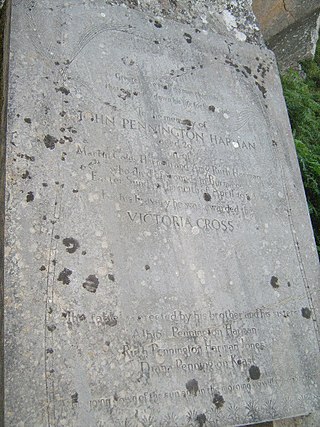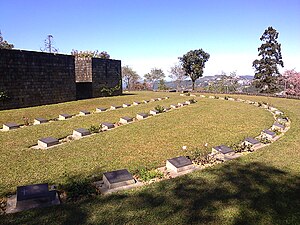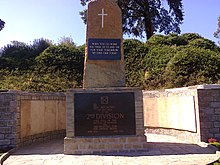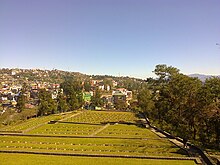
The British Fourteenth Army was a multi-national force comprising units from Commonwealth countries during the Second World War. As well as British Army units, many of its units were from the Indian Army and there were also significant contributions from British Army's West and East African divisions. It was often referred to as the "Forgotten Army" because its operations in the Burma Campaign were overlooked by the contemporary press, and remained more obscure than those of the corresponding formations in Europe for long after the war. For most of the Army's existence, it was commanded by Lieutenant-General William Slim.

The Indian Army during World War II, a British force also referred to as the British Indian Army, began the war, in 1939, numbering just under 200,000 men. By the end of the war, it had become the largest volunteer army in history, rising to over 2.5 million men in August 1945. Serving in divisions of infantry, armour and a fledgling airborne force, they fought on three continents in Africa, Europe and Asia.

The Burma campaign was a series of battles fought in the British colony of Burma. It was part of the South-East Asian theatre of World War II and primarily involved forces of the Allies against the invading forces of the Empire of Japan. Imperial Japan was supported by the Thai Phayap Army, as well as two collaborationist independence movements and armies. The first of these was the Burma Independence Army, which spearheaded the initial attacks against the country. The Indian National Army, led by Subhas C. Bose of the Free India movement, also collaborated with Imperial Japan, especially during Operation U-Go in 1944. Nominally independent puppet states were established in the conquered areas and some territories were annexed by Thailand. In 1942 and 1943, the international Allied force in British India launched several failed offensives to retake lost territories. Fighting intensified in 1944, and British Empire forces peaked at around 1 million land and air forces. These forces were drawn primarily from British India, with British Army forces, 100,000 East and West African colonial troops, and smaller numbers of land and air forces from several other Dominions and Colonies. These additional forces allowed the Allied recapture of Burma in 1945.

Kohima is the capital of the Indian state of Nagaland. With a resident population of almost 100,000, it is the second largest city in the state. Kohima constitutes both a district and a municipality. The municipality covers 20 km2 (7.7 sq mi). The city lies on the foothills of Japfü section of the Barail Range located south of the District and has an average elevation of 1,261 metres.

The Battle of Kohima proved the turning point of the Japanese U-Go offensive into India in 1944 during the Second World War. The battle took place in three stages from 4 April to 22 June 1944 around the town of Kohima, now the capital city of Nagaland in Northeast India. From 3 to 16 April, the Japanese attempted to capture Kohima ridge, a feature which dominated the road by which the besieged British and Indian troops of IV Corps at Imphal were supplied. By mid-April, the small British and British Indian force at Kohima was relieved.

The Battle of the Tennis Court was part of the wider Battle of Kohima that was fought in North East India from 4 April to 22 June 1944 during the Burma Campaign of the Second World War. The Japanese advance into India was halted at Kohima in April 1944 and Garrison Hill, on a long wooded ridge on a high ridge west of the village, was, according to the Commonwealth War Graves Commission the scene of "perhaps the most bitter fighting of the whole Burma campaign when a small Commonwealth force held out against repeated attacks by a Japanese Division". During the siege of Kohima, heavy fighting, including hand-to-hand combat, occurred in the grounds surrounding the Deputy Commissioner's bungalow, including the tennis court, beginning around 8 April and continuing until 13 May when the assaulting Japanese troops began withdrawing from the area.

The Battle of Imphal took place in the region around the city of Imphal, the capital of the state of Manipur in Northeast India from March until July 1944. Japanese armies attempted to destroy the Allied forces at Imphal and invade India, but were driven back into Burma with heavy losses. Together with the simultaneous Battle of Kohima on the road by which the encircled Allied forces at Imphal were relieved, the battle was the turning point of the Burma campaign, part of the South-East Asian theatre of World War II. The Japanese defeat at Kohima and Imphal was the largest up until that time, with many of the Japanese deaths resulting from starvation, disease and exhaustion suffered during their retreat. According to a voting in a contest run by the British National Army Museum, the Battle of Imphal was bestowed as Britain's Greatest Battle in 2013.

Lance Corporal John Pennington Harman VC was a British Army soldier and an English recipient of the Victoria Cross (VC), the highest and most prestigious award for gallantry in the face of the enemy that can be awarded to British and Commonwealth forces.

The 33rd Division was an infantry division of the Imperial Japanese Army. Its call sign was the Bow Division. The 33rd Division was raised in Utsunomiya, Tochigi prefecture, simultaneously with 32nd, 34th, 35th, 36th and 37th Divisions. Its headquarters were initially in Sendai. It was raised from conscripts largely from the northern Kantō prefectures of Tochigi, Ibaraki and Gunma.
The 31st Division was an infantry division of the Imperial Japanese Army. Its call sign was the Furious Division. The 31st Division was raised during World War II in Bangkok, Thailand, on March 22, 1943, out of Kawaguchi Detachment and parts of the 13th, 40th and 116th divisions. The 31st division was initially assigned to 15th army.
The Battles and Operations involving the Indian National Army during World War II were all fought in the South-East Asian theatre. These range from the earliest deployments of the INA's preceding units in espionage during Malayan Campaign in 1942, through the more substantial commitments during the Japanese Ha Go and U Go offensives in the Upper Burma and Manipur region, to the defensive battles during the Allied Burma campaign. The INA's brother unit in Europe, the Indische Legion did not see any substantial deployment although some were engaged in Atlantic wall duties, special operations in Persia and Afghanistan, and later a small deployment in Italy. The INA was not considered a significant military threat. However, it was deemed a significant strategic threat especially to the Indian Army, with Wavell describing it as a target of prime importance.

The U Go offensive, or Operation C, was the Japanese offensive launched in March 1944 against forces of the British Empire in the northeast Indian regions of Manipur and the Naga Hills. Aimed at the Brahmaputra Valley, through the two towns of Imphal and Kohima, the offensive along with the overlapping Ha Go offensive was one of the last major Japanese offensives during the Second World War. The offensive culminated in the Battles of Imphal and Kohima, where the Japanese and their allies were first held and then pushed back.

The Taukkyan War Cemetery is a cemetery for Allied soldiers from the British Commonwealth who died in battle in Burma during the Second World War. The cemetery is in the village of Taukkyan, about 25 kilometres (16 mi) north of Yangon on Pyay Road. It is maintained by the Commonwealth War Graves Commission.

The fighting in the Burma campaign in 1944 was among the most severe in the South-East Asian Theatre of World War II. It took place along the borders between Burma and India, and Burma and China, and involved the British Commonwealth, Chinese and United States forces, against the forces of Imperial Japan and the Indian National Army. British Commonwealth land forces were drawn primarily from the United Kingdom, British India and Africa.
The British Indian XXXIII Corps was a corps-sized formation of the Indian Army during the Second World War. It was disbanded and the headquarters was recreated as an Army headquarters in 1945.

The Imphal War Cemetery is located in Imphal, the capital of the Indian state of Manipur, in Northeast India, which has an international border with upper Burma. The cemetery has 1,600 Commonwealth burials of the Second World War and is maintained by the Commonwealth War Graves Commission. Many of the people buried in the cemetery were killed during the Battle of Kohima and Imphal.
The following events occurred in April 1944:

Colin St Clair Oakes MBE ARIBA was a British architect. He was a Principal Architect for the Imperial War Graves Commission responsible for many of the war cemeteries and memorials in Asia after the second world war. Notable amongst these are Kranji War Cemetery and Memorial in Singapore, Sai Wan War Cemetery in Hong Kong, and Kohima War Cemetery in Nagaland, India.

The Chamar Regiment was an infantry regiment formed by the British during World War II. Raised on 1 March 1943, the regiment was initially assigned to the 268th Indian Infantry Brigade. The regiment was disbanded in 1946.
Midland Ward is a ward located under Nagaland's capital city, Kohima. The ward is sub-divided into three neighbourhoods: Upper Midland, Middle Midland and Lower Midland.


















